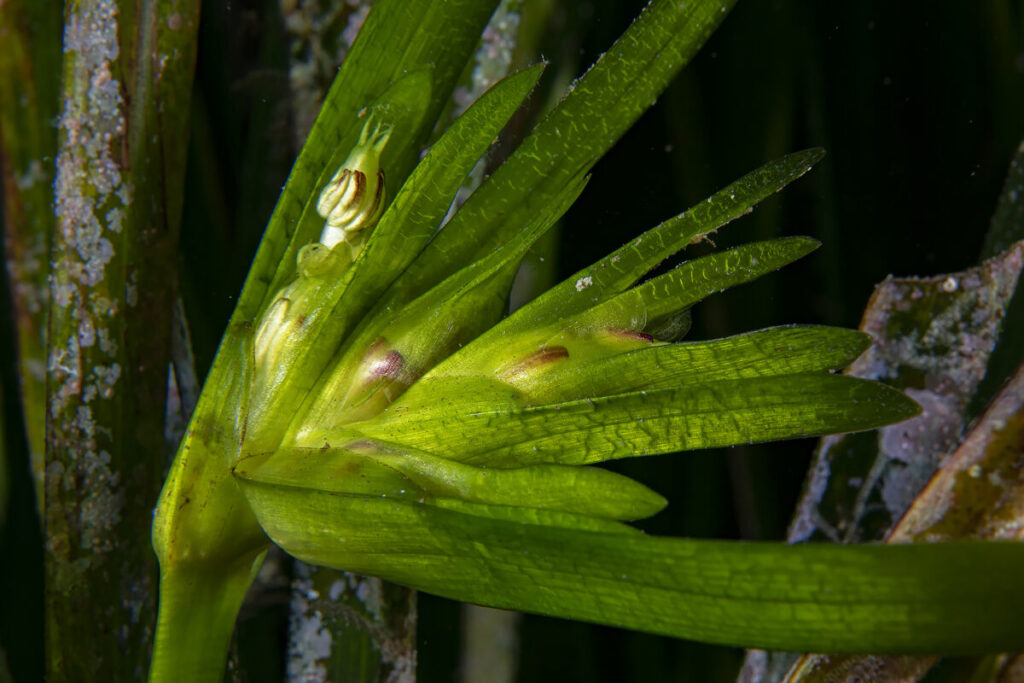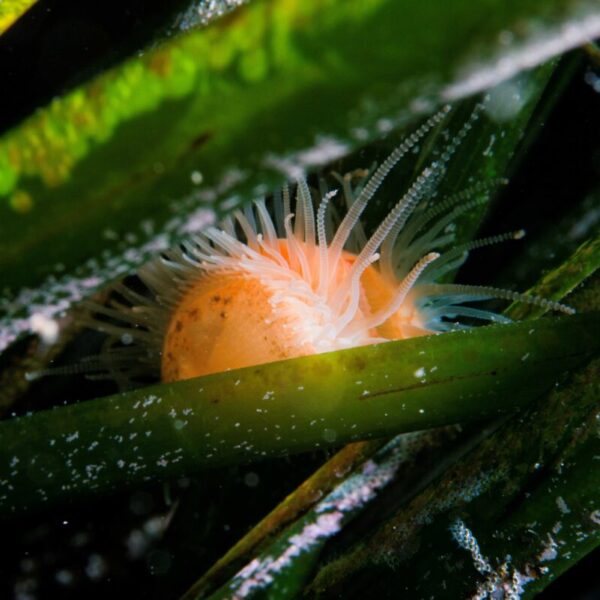The Galathéa International Marine World Festival attracts around 10,000 visitors each year in Hyères, a town located in the southeast of France. The tenth edition - from November 20 to 23 - features an iconic figure in ocean protection, Paul Watson (Sea Shepherd), and revolves around two strong themes: a "different perspective" on Posidonia and a reflection on the image of the Mediterranean in the media. These issues are often approached through the lens of catastrophism, which is at the heart of Nicolas Barraqué's work. This photographer, diver, author, and initiator of the festival advocates for a more nuanced approach, based on observation, knowledge, and above all, facts.
By Olivier Martocq - Journalist
AI Index: Library of Mediterranean Knowledge
Posidonia or “the intimacy” of a living meadow
22-med – November 2025
• A diving photographer reveals the unsuspected richness of Posidonia meadows around Porquerolles.
• Galathéa highlights a fragile but resilient Mediterranean, documented away from catastrophism.
#mediterranean #ecology #posidonia #biodiversity #photo #ocean #hyères #porquerolles #portcros
The town of Hyères has the unique feature of being partly located in the maritime domain of the Port-Cros National Park. It is here that, for six years, Nicolas Barraqué and a small collective of photographers have been building a series of exhibition books around an ABC of the Mediterranean, each time presented in 240 pages and in traveling public exhibitions. The latest volume, dedicated to the "clothes of Posidonia," is the result of two years of diving around the island of Porquerolles and the Giens peninsula. This meadow, commonly referred to as a "submarine prairie," becomes, under his lens, a world in motion, rich in unusual behaviors and unknown species.
It documents phenomena that are rarely photographed: the flowering and fruiting of Posidonia – spectacular in 2022 – or the unexpected presence of a dragonet fish, seahorses. And even the unprecedented scene of a cardinalfish releasing its larvae into the water from the meadow. “Sometimes it’s like a police investigation, he considers. Scientists like Patrick Rizzi or Stéphane Berg didn’t know that the cardinalfish was found there. The photo allowed us to certify the presence of this species, which is very common around the coral reefs of Java and New Guinea, and to discover its behavior.” Several times, images brought up from the depths he explores have led to the identification of species never recorded in the Mediterranean. His collaboration with the National Museum of Natural History is invaluable.
“When you know how to look, you see the positive”
In the face of the dominant discourse that describes the Mediterranean as “the most polluted sea in the world,” Nicolas Barraqué calls for nuance. He has been diving for nearly fifty years and describes a contrasting evolution: yes, the Mediterranean remains fragile, but many indicators are improving thanks to protection policies initiated since the 1970s, particularly along European coasts. Wastewater treatment plants, regulations on moorings, the end of certain destructive fishing practices, the expansion of marine protected areas: these measures have produced visible results. “Around the island of Porquerolles, we now observe groupers of a few centimeters, which we never saw before. We see gorgonian spawns every year. To look is also to witness the return of life. Photography allows us to share this reality with the general public.”
His perspective is uncompromising. Nicolas Barraqué criticizes the gap between field knowledge, scientific discourse based on Posidonia, and approximate political messages – when, to create a buzz, a minister or an elected official makes announcements while protection measures have already been deployed for twenty years. “On our coasts, we protected the Mediterranean because it was an economic reservoir with tourism. The water quality in the 1970s made people sick, he recalls. So we created wastewater treatment plants, we stopped allowing factory discharges... Gradually, we learned to know, to manage, to monitor. It works. We must continue and take care of the shores where this type of policy is not a priority.” His approach prioritizes facts derived from systematic observations, which aligns with the initial mission of Galathéa: to share reliable, accessible, documented knowledge.
From photography to the festival: a marine culture to pass on
For twenty years, his outdoor photographic exhibitions - in ports, gardens, city centers, and on highways in summer to engage vacationers - have reached 150 million people according to site attendance figures. For someone who has extensively photographed the iconic wrecks of the area, the harbor of Hyères is a unique laboratory: exceptional biodiversity, dense historical heritage, waters where currents, fauna, and meadows interact.
But he points out a paradox: many residents are still unaware of the richness of these underwater grounds preserved by the Port-Cros National Park. However, if nature has reclaimed its rights, it is because this space is sanctuarized without being prohibited. Professional and amateur fishermen are accepted, but within regulated practices. Just like boaters who must moor on buoys when there are meadows to protect but can anchor on sandy bottoms.
Hence this conviction, which he often repeats: educating, showing, explaining remain essential levers to protect a sea that, despite its fragility, demonstrates resilience. His images, his books, and the Galathéa festival pursue this goal.


Diving since 1979, photographer since 1984, author, publisher, and graphic designer, Nicolas Barraqué is a central figure in the Mediterranean underwater world.
Former president of the Déclic Bleu Méditerranée association, founder of the Turtle Prod publishing house (about forty works), director of the magazine Plongez !, he also initiated Galathéa, which has become a major event in marine culture in France over ten years.
His career is also marked by a global innovation: the underwater panoramic technique, used to reconstruct entire wrecks in a single image, without distortion – including that of the Rubis. This achievement earned him the Golden Trident in 2021, an award from the International Academy of Underwater Sciences and Techniques.
Cover photo: lime baillante in Posidonia limaria hians © Nicolas Barraqué
